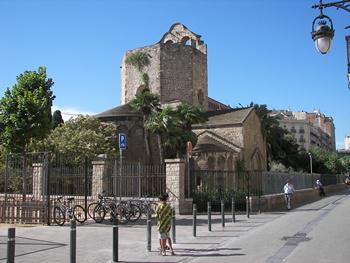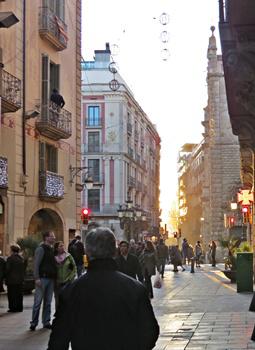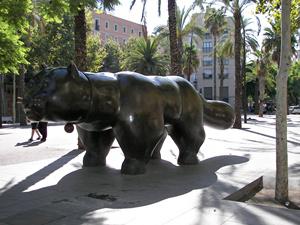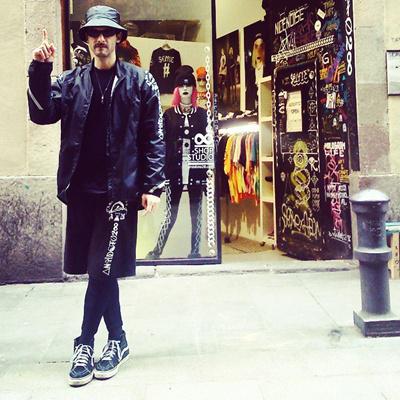
Many years ago the Romans came to Barcelona. After trying several locations, and after several battles with the inhabitants of those lands they thought it was best to settle between the Las Ramblas and the Via Laietana which at that time were creeks, and there was neither the Opera Café or the Post Office building. The Romans really liked the area and decided to stay and to protect themselves they began to build a wall. That was in the first century BC. Within the limits of that wall lived the former Barcelona until the twelfth century. All close together for centuries. Some, perhaps because of the stress and others because living outside the walls ceased to be dangerous (at least for a while) and the prosperity increased, started to build new settlements outside the wall around churches and monasteries.

And from this stories and these history are left magnificent buildings in Ciutat Vella with large doors to give access to the staples of the horses and to their large homes with high ceilings and patios, but also the buildings for the lower classes with their modest homes and their narrow stairs; as well as the palaces, mansions, churches, the Cathedral, and the small mansions. Some of the small mansions have been converted into museums such as the Picasso museum. And the squares: the largest, Plaça Reial and other small or tiny ones which seem to be center of the labyrinth but no, the labyrinth continues. No horses trotting through the streets of the old town and no cars are circulating or at least not in all of them. What you can find in Ciutat Vella is a lot of people on foot or by bicycle and sometimes new single wheeled vehicles that seem designed for a superhero wearing a cape and has a large current account. A lot of life and energy flows through the Ciutat Vella, divided by Las Ramblas. Shops, bars and restaurants everywhere, and art galleries, a constant movement diluted in its quiet, dark and mysterious alleys where you can almost touch both sides extending the arms. There are also modern buildings added by urban planners into the labyrinth of streets (MACBA Museum, universities, Filmoteca), and in old buildings modern parts (CCCB, Palau de la Musica) were added.
The Raval quarter

Ciutat Vella (old city). Old quarters, but different quarters or neighborhoods. El Raval, one of quarters situated in the beginning outside the city wall, while later and with the third expansion, would remain within its perimeter. Today, the Raval quarter is the most multicultural of all, the most alternative with inimitable bars like the Pastis, London, Marsella or Almirall.

El Raval, the quarter where the opera burned almost to the ground and rose again with difficulty, hit by the crisis. And where the Boqueria market offers all kinds of fresh products, in the middle of Las Ramblas. And with the great sculpture, the cat by Botero in the Rambla del Raval and the Film Archive (Filmoteca) which seems to have found its permanent location. We are still strolling around in the Raval: the La Santa Creu site, the Maritime Museum, the Palace of the Viceroy (La Virreina), and ... there was even invented a verb related to El Raval: "ravalear" probably a trick of the administrative marketing to soften the image of a neighborhood which in another moment not long ago was called Chinatown (barrio chino), and is known in other parts of the world as red light district. A memory of 30 years ago: at Lancaster street, almost at dawn, a bakery sold the first croissants of the day to night owls before opening to the public. The coissants were delicious. Will it still be open? Is the back door selling still allowed?
And now, should we cross the Ramblas and change the neighborhood? Too much for one day. We better go to the hotel or apartment and leave the Gothic Quarter for another day.
Add new comment